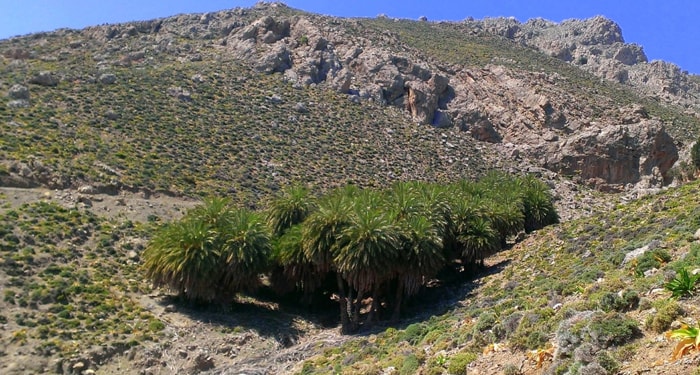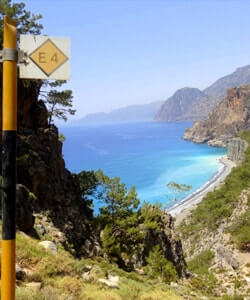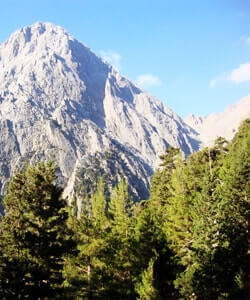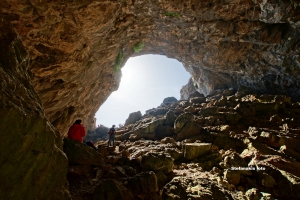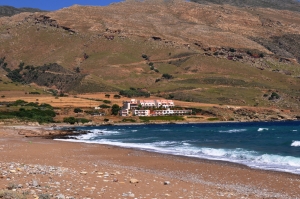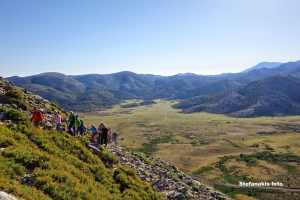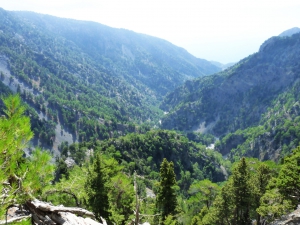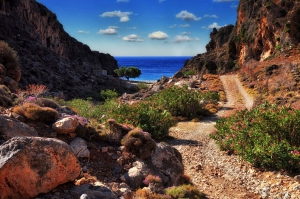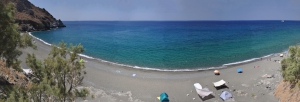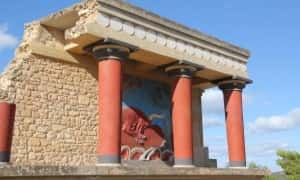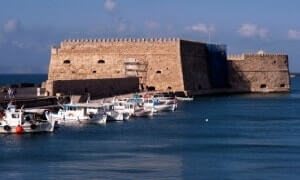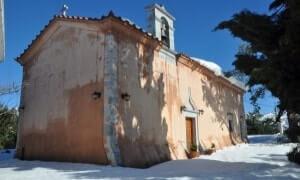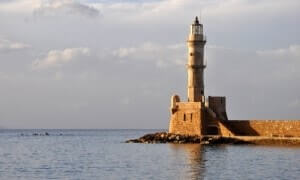The cave of Kamares, also called Kamaraiko, is located at the southern foot of Psiloritis. In particular, it is situated on the slopes of Mount Soros, at an altitude of 1700m and northeast of the homonym village of Kamares. It is not important in terms of speleology, but the minoan findings made the cave a very important archaeological site.
The beach of Kalyviani is located 1km north of the homonym traditional village and 7km northwest of Kissamos, near the Peninsula of Gramvousa. It is a perfect choice for the visitors of the picturesque village of Kaliviani.
The plateau can be reached via a dirt road starting from the picturesque village of Anogia, but also via a rugged dirt track from Gergeri. The plateau is used as pasture and is not cultivated. Due to overgrazing, you we’ll not see any trees in the plain, although it was previously covered by dense forest.
The beach at Keramoti is located next to the homonym village and is located 75km southwest of Chania and 36km south of Kissamos. It is a large and pebbly unorganised beach with rocks in places, quite unknown to everybody, except the locals.
Tripiti is the second large gorge parallel to Samaria gorge and, like Klados, the trail heading to its entrance also starts at Linosseli spring. In order to approach its entrance there is a dangerous passage where you risk getting stuck, so that you can neither walk on nor turn around and go back. Therefore, you should never attempt to cross this place it without the escort of an experienced hiker.
Agia Irini is a small remote picturesque village located 98km southeast of Agios Nikolaos and 11km south of Ziros village. You can reach the village via dirt tracks starting either from Kalo Horio or from Hametoulo (both 7km long). The village is the starting point of the rugged Agia Irini Gorge that exits in one secluded cove, opposite the small islet of Hamili.
Dyskos is located 75km southwest of Heraklion, just 1-2km west of Lendas. It is a small settlement, known also as Dytikos, which is separated from the village of Lendas by the famous Cape Lion. Lion is said that was one of the lions carrying the chariot of the goddess Rhea and was petrified here.
The village has faced a very mild touristic development, which makes it a very quiet destination even in August. Along the seaside village road stretches a large pebbly beach with clean and cool water, not very well organised, although there are some places with umbrellas and taverns nearby. After swimming you can enjoy the famous local fish.






